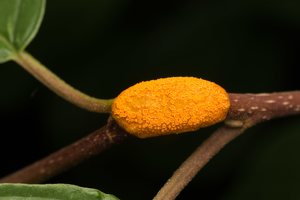- sort orderDefault
Photo title, A → Z
Photo title, Z → A
✔ Date created, new → old
Date created, old → new
Date posted, new → old
Date posted, old → new
Visits, high → low
Random - Google Map
- map
 home / Fungi · grybai / Pucciniaceae · rūdiniai / Puccinia coronata · vainikuotoji rūdė
home / Fungi · grybai / Pucciniaceae · rūdiniai / Puccinia coronata · vainikuotoji rūdė

-
 Frangula alnus · paprastasis šaltekšnis
Frangula alnus · paprastasis šaltekšnis
-
 Frangula alnus · paprastasis šaltekšnis
Frangula alnus · paprastasis šaltekšnis
-
 Puccinia coronata · vainikuotoji rūdė
Puccinia coronata · vainikuotoji rūdė
Puccinia coronata · vainikuotoji rūdė
- oat and barley crown rust
- paatsaman-heinänruoste
- vainikuotoji rūdė
- auzu vainagrūsa
- kroonroest
Crops with resistant phenotypes are often released, but within a few years virulent races have arisen and P. coronata can infect them. Teliospores on barley straw and residue of susceptible grasses left in the field germinate in the spring and produce basidiospores that infect Rhamnus, Frangula. Pycnial and aecial stages are produced on the alternate host. Aeciospores from R. cathartica are the primary inoculum for infecting barley. The primary infections, which can occur as early as the three leaf stage of barley in the spring, develop into uredinia. Urediniospores produced in the uredinia repeat the infection process, and the fungus undergoes several cycles of reproduction on barley during the growing season. Spread by wind-borne urediniospores can carry the fungus some distance from the R. cathartica bushes that were the original sources of primary inoculum, although such secondary spread seems much less extensive than that for oat crown rust.
Barley crown rust can infect rye as well as barley. In addition, it also infects a number of wild grasses. The fungus readily forms telia on these hosts, which serve as a reservoir of overwintering teliospores. Quackgrass may be the most important reservoir for overwintering telia. This ubiquitous, perennial weed is very susceptible to the rust and is often found growing near Rhamnus, Frangula.